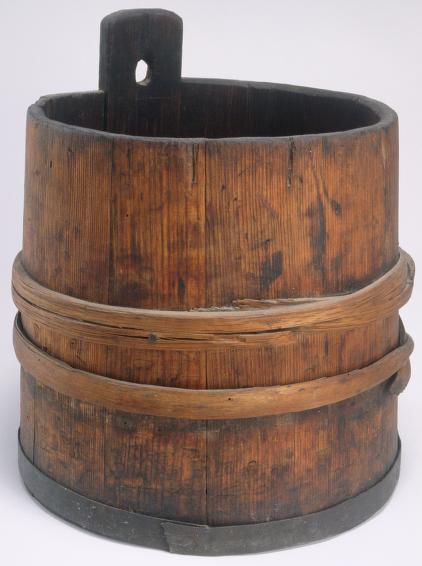




Advanced Search
| Online Collection |
|
|||||||||||||||||||
|
In the era before the Europeans arrived in North America, the inhabitants collected the sap from the sugar maple (Acer saccaharum; also known as the rock maple), which flowed strongly in the late winter, in the weeks just before spring.The sugar maple's sap sugar content (two to three percent) is much higher than other deciduos trees. Prior to about 1800, cuts were made in a tree, three or four grouped together. This was called a "box." Under it, a wood chip was placed in a horizontal cut. Sap ran out across the chip and was collected in a hollowed-out log or trough. This technique would eventually kill the tree. Beginning around 1800, taps, or hollow wooden dowels, were placed in holes drilled into the trunk, and a bucket caught the dripping sap. Later, iron hangers were pounded into the trunk and used to hold the buckets. This bucket comes from that era: note the distinctive eyelet for the hanger. By the mid-1800s, tin buckets became available. They were lighter, and were more consistently waterproof; the taps were then made of tin and later steel. They served until the 1960s, when tubing was introduced, eliminating the need for buckets amoung many sugaring houses. Other sugarers continued to use buckets to collect sap.
|
Sap Bucket
|
| |
Home | Online Collection | Things
To Do | Turns
Exhibit | Classroom | Chronologies | My
Collection
About This Site | Site Index | Site Search | Feedback


